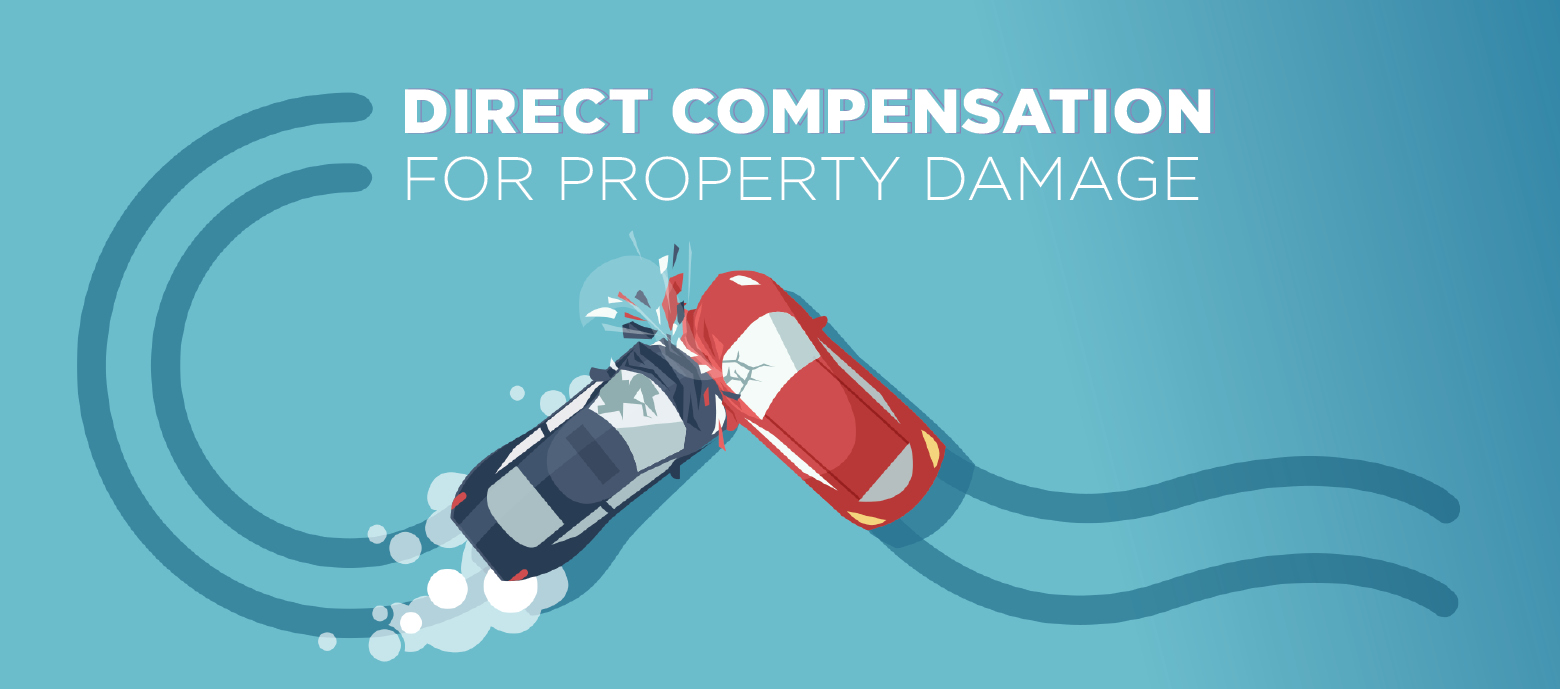On January 1, 2022, Alberta implemented a Direct Compensation for Property Damage (DCPD) system to provide drivers with better support and response times on collision claims.
DCPD is part of the mandatory auto insurance coverage that also includes liability and accident benefits, and applies to all personal and commercial policies in Alberta, regardless of when the policy renews.
How Does This Impact Alberta Drivers?
Effective January 1, 2022, DCPD will apply to all motor vehicle accidents in Alberta, replacing the property damage portion of the third party liability coverage on a policyholder’s automobile insurance. This means that vehicle owners will receive coverage from their own insurance company instead of the other party’s for any not at-fault collision. This won’t change a driver’s automobile coverage–just who pays for it.
DCPD Benefits
- It’s a fairer system for everyone.
- It provides transparency when determining fault for a collision.
- It reduces costs related to subrogation, which will help stabilize premiums in the long run.
- It speeds up vehicle repairs by not having to deal with another driver’s insurer.
- It makes rates more affordable by containing expenses associated with bodily injury claims.
- It furthers care by increasing coverage for diagnostic and treatment services.
- It has a $0 deductible, though insurance companies may offer alternative deductions to reduce the premium charged under DCPD.
What Does DCPD Cover?
Vehicle Damage
If found 100% not responsible for a collision, the driver’s insurer will cover damages to the vehicle, its contents, and loss of use. If partially at-fault, DCPD will cover the not-at-fault extent of damage.
Damage to the Driver
DCPD will pay for medical and rehabilitation expenses, regardless of who’s at fault. Those injured from a collision can still pursue legal action.
Out-of-Province Collisions
DCPD is already used in most provinces, with comparable DCPD stipulations for vehicle damages. If an Alberta driver gets into an accident elsewhere in Canada, their insurance claim will follow the same procedures.
The Difference Between DCPD and Collision Coverage
Collision coverage only pertains to vehicle repairs for at-fault accidents, and is an optional add-on to standard vehicle insurance. DCPD covers vehicle damage, as well as damage to contents and loss of use for not-at-fault accidents.
Those with collision coverage will receive compensation for damage to their vehicle resulting from at-fault accidents, hit-an-runs, and collisions involving uninsured vehicles. Those without collision coverage will be required to cover their vehicle damage costs out of pocket. The amount owing will be based on the percentage they’re found at-fault for the accident.
Insurance Assessments
Insurance Companies will base all claims on specific scenarios using the DCPD Fault Determination Rules. Based on their findings, liability for vehicle collisions will be apportioned accordingly.
For example, a driver is held 50% responsible for an accident. As a result, 50% of vehicle repairs is covered under DCPD for the portion not a- fault, and the other 50%cis covered under Collision, with the deductible adjusted to reflect the percentage of fault
For situations that do not fall under DCPD scenarios, liability will be allocated according to the regular insurance guidelines.
Impacts on Insurance Premiums
DCPD helps align insurance premiums with costs related to vehicle repairs. According to compulsory filings received by the Alberta Automobile Insurance Rate Board (AIRB), 42% of policyholders will see a decrease in their premiums approximately 34% will see a 0% to 5% increase, and 15% will see no change at all.
Premium Costs
Under DCPD, policyholders will now pay a premium based on what vehicle they drive. Insurance companies, will factor in the year, make and model of a vehicle, how likely it will be involved in a collision, and how expensive it will be to repair.
More often than not, less expensive vehicles cost less, so premiums will be lower. In contrast, more expensive vehicles cost more to repair may, which means premiums will be higher.
At-Fault vs. Not At Fault Collisions
Drivers responsible for an accident will likely see their insurance premiums increase. Optional insurance coverage like Collision, could also increase, too. Not at-fault drivers will not be adversely affected by using DCPD coverage, as premiums will not change.
Claims Ratings
Much like how not-at-fault claims were handled, DCPD claims that are 100% not at-fault will not be used in rating for personal and individually rated commercial automobiles.
Key Takeaways
- DCPD coverage is part of mandatory auto insurance that is a fairer system for everyone.
- Under DCPD, policyholders will receive 100% of not at-fault insurance claims caused by another driver, and the not at-fault portion of claims, when partially responsible.
- Insurance companies will determine claims using the DCPD Fault Determination Rules.
- The cost of DCPD coverage will partly depend on the type of the vehicle a person drives, though only 0% to 5% on policyholders should see an increase in their premiums.
- Making a DCPD claim does not negatively affect insurance premiums, though at-fault collisions likely will.
While DCPD may take some getting used to, Albertans should start noticing an improvement in customer consistency, and a more streamlined process that allows vehicle repairs to get done faster than before.
For more information, visit the Insurance Bureau of Canada.

